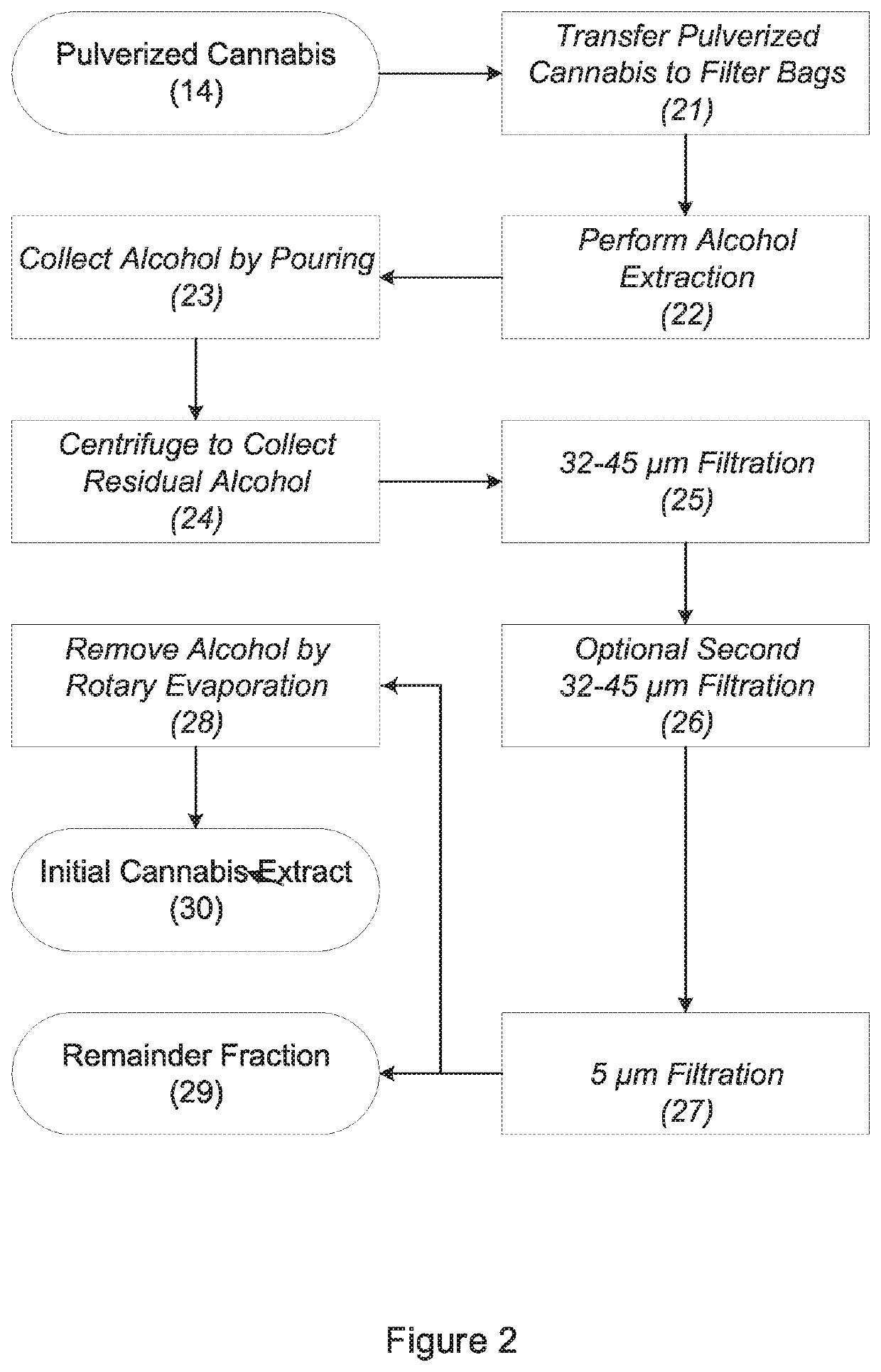Active fraction from therapeutic cannabis plant extracts
a technology of active fraction and cannabis plant, which is applied in the direction of solvent extraction, plant/algae/fungi/lichens ingredients, separation processes, etc., can solve the problems of not believed to possess therapeutic or commercial value, affecting the stability or safety of formulations limiting the shelf-life of ballast formulated from such extracts, etc., to achieve the effect of promoting the conversion of thca to 9 th
- Summary
- Abstract
- Description
- Claims
- Application Information
AI Technical Summary
Benefits of technology
Problems solved by technology
Method used
Image
Examples
Embodiment Construction
[0018]The following description is provided to enable any person skilled in the art to make and use the invention and sets forth the best modes contemplated by the inventor of carrying out his invention. Various modifications, however, will remain readily apparent to those skilled in the art, since the general principles of the present invention have been defined herein specifically to provide a cannabis extraction method that produces a biologically active remainder fraction.
[0019]The present invention is a process that includes several stages, which are described below as Stages 1-2, 3A-3C, and 4. Where the process refers to the use of “alcohol,” a solution containing at least 99% ethanol by volume or at least 99% isopropyl alcohol by volume is preferred although concentrations as low as about 95% alcohol can be used. Specifically, “ethyl alcohol 200 proof” or “99.9% isopropyl alcohol” supplied by Green Wood Cleaning Products, Inc., of Hollister, Calif., may be used.
[0020]Stage 1:...
PUM
| Property | Measurement | Unit |
|---|---|---|
| temperature | aaaaa | aaaaa |
| temperature | aaaaa | aaaaa |
| temperature | aaaaa | aaaaa |
Abstract
Description
Claims
Application Information
 Login to View More
Login to View More - R&D Engineer
- R&D Manager
- IP Professional
- Industry Leading Data Capabilities
- Powerful AI technology
- Patent DNA Extraction
Browse by: Latest US Patents, China's latest patents, Technical Efficacy Thesaurus, Application Domain, Technology Topic, Popular Technical Reports.
© 2024 PatSnap. All rights reserved.Legal|Privacy policy|Modern Slavery Act Transparency Statement|Sitemap|About US| Contact US: help@patsnap.com










